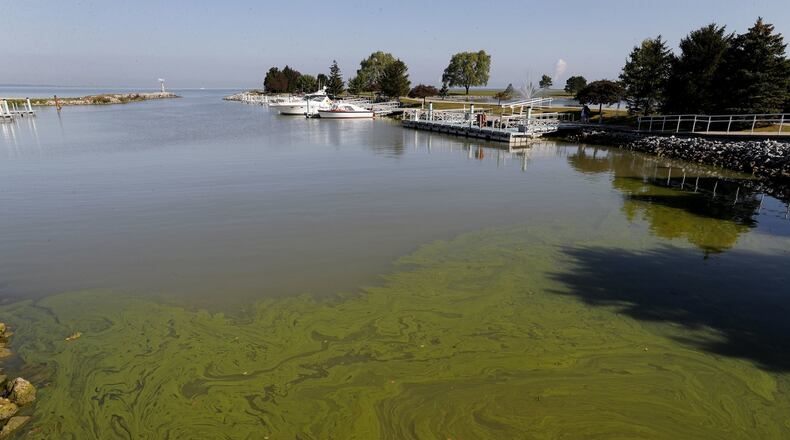“We realize there’s a problem but this is going to take an overwhelming amount of manpower that no one has ever even thought about as far as implementation,” Stateler said, standing alongside a handful of Republican lawmakers at a Wednesday news conference at the Statehouse.
Kasich signed an executive order on July 11 calling for the Ohio Soil and Water Conservation Commission to designate eight watersheds as “distressed.” That would allow the Ohio Department of Agriculture, Environmental Protection Agency and Department of Natural Resources to set rules for applying manure and fertilizer. It would allow state regulators to require farmers develop nutrient management plans, which detail how fertilizer is applied, and enforce those plans.
The commission, which is appointed by the governor, is set to approve the designation at a Thursday meeting. Two days after signing the order, Kasich appointed two new members to the panel.
“From a legislative standpoint, we’re very concerned anytime we talk about regulations, particularly those moving quickly, that make the job of the agriculture industry any harder than it already is,” House Speaker Ryan Smith said.
Kasich administration defends plan
The Kasich administration has urged stronger regulations on farmers since an April report using 2017 data showed little improvement in reducing phosphorous from agricultural and nonpoint sources in the Maumee River. Kasich was unable to convince a state lawmaker to carry his proposed changes in a bill.
Ohio EPA Director Craig Butler said the plan isn’t meant to punish agriculture but to make changes based on data. Ohio has committed to reducing phosphorous entering the lake’s western basin by 40 percent by 2025.
“There’s a wealth of data we’ve been collecting over the years that led us to be suggesting there are watersheds in that larger Maumee River watershed that need more attention than others and we should be focusing our resources there,” Butler said in an interview.
The effort will get a boost from a $36 million bill signed last week by Kasich. The new law provides $3.5 million to beef up soil and water conservation personnel who work with farmers and $20 million that can be loaned for equipment needed to meet any new requirements.
State regulators have invited farmers and agriculture groups to weigh in on draft rules as they go through the months-long rulemaking process.
One draft rule already has the objection of farmers: Prohibiting fertilizer spreading during winter months with some exceptions. Rep. Brian Hill, a Zanesville Republican and farmer, said sometimes the weather brings warmer days that would be great for applying nutrients.
Hill said action should be delayed until regulators get more input from farmers affected by the plan and Kasich should rescind his executive order.
“Policy changes this expansive should be considered in law with many opportunities for public input, not thru an obscure rulemaking process,” Hill said.
About the Author
